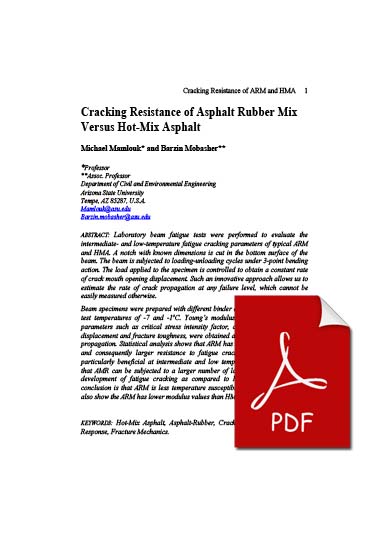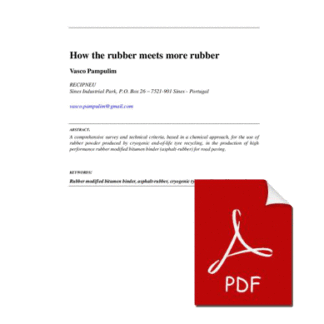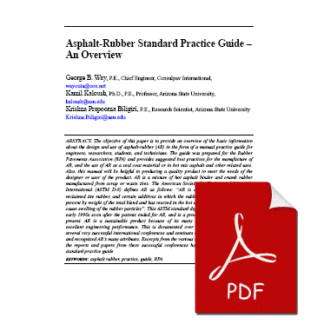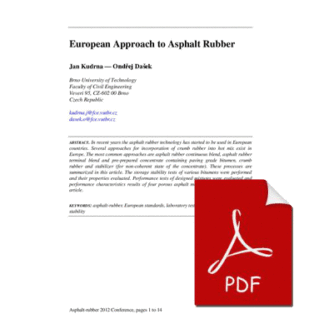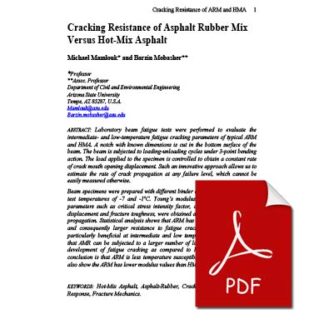Description
Laboratory beam fatigue tests were performed to evaluate the intermediate- and low-temperature fatigue cracking parameters of typical ARM and HMA. A notch with known dimensions is cut in the bottom surface of the beam. The beam is subjected to loading-unloading cycles under 3-point bending action. The load applied to the specimen is controlled to obtain a constant rate of crack mouth opening displacement. Such an innovative approach allows us to estimate the rate of crack propagation at any failure level, which cannot be easily measured otherwise.
Beam specimens were prepared with different binder contents and tested at two test temperatures of -7 and -1oC. Young’s modulus and non-linear fracture parameters such as critical stress intensity factor, critical crack tip opening displacement and fracture toughness, were obtained at different stages of crack propagation. Statistical analysis shows that ARM has higher fracture toughness and consequently larger resistance to fatigue cracking than HMA. This is particularly beneficial at intermediate and low temperatures, which indicates that AMR can be subjected to a larger number of load repetitions before the development of fatigue cracking as compared to HMA. Another important conclusion is that ARM is less temperature susceptible than HMA. The results also show the ARM has lower modulus values than HMA.

